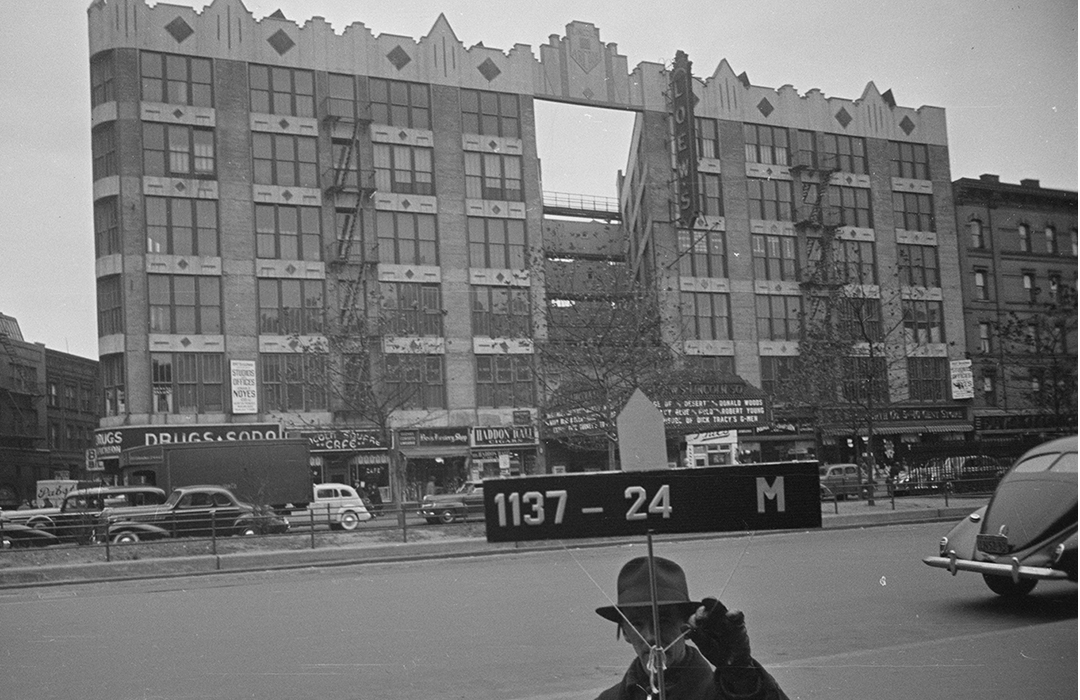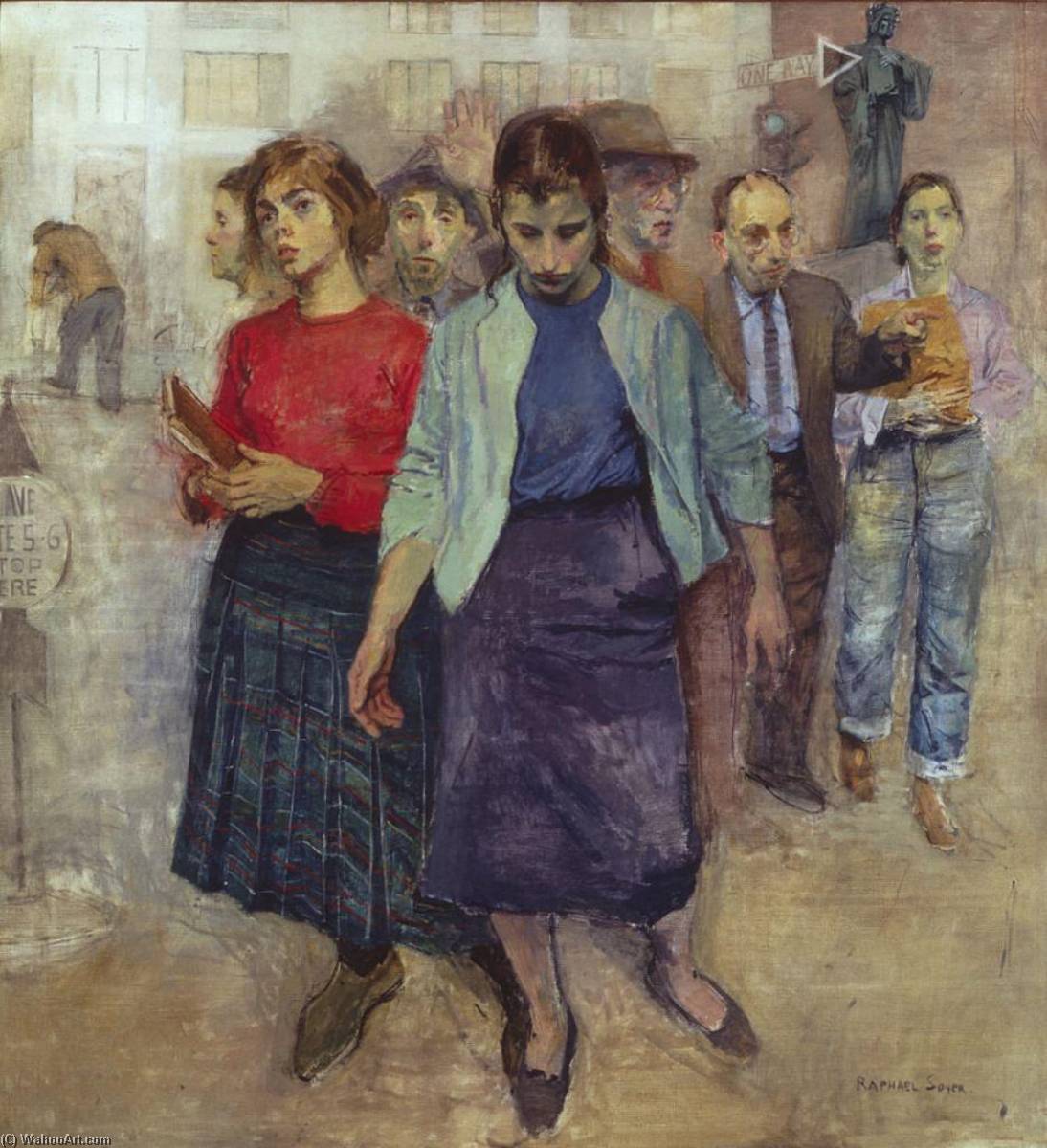
Lincoln Square Arcade aka Tegan’s Arcade
by Sarah Bean Apmann
Plans were filed in 1902 for a six-story “brick and stone offices and store building” at the northwest corner of Broadway and West 65th Street. This mundane description of the building’s planned use belied its future as the Bohemia of the Upper West Side housing among other things writers, artists, and studios. Located at the site of The Juilliard School, this building was the Lincoln Square Arcade and it stood somewhat in contrast to the high-end artists studios along West 67th Street and the Hotel des Artists at 1 West 67th Street. It was designed by Julius Munckwitz and owned by John L. Miller.
One of the famous residents who made their home there was author Owen Johnson who included it as the setting in his novel, The Woman Gives. He wrote this description of the building:
Located at the site of The Julliard School, this building was the Lincoln Square Arcade and it stood somewhat in contrast to the high-end artists studios along West 67th Street and the Hotel des Artists at 1 West 67th Street.
Tegan’s Arcade stood, and in the slow progress of the city it may still stand, at the intersection of Broadway and Columbus Avenue, where the grumbling subway and the roaring elevated meet at Lincoln Square. It covered a block bisected by an arcade and rising six capacious stories in the form of an enormous H. On Broadway, the glass front was given over to shops and offices of all descriptions, while in the back stretches of the top stories, artists, sculptors, students, and illustrators had their studios alongside mediums, dentists, curious business offices, and derelicts of all description.*
Also included in the building’s amenities was a bowling alley and a 1,600-seat theater that opened in 1906.
Artists who worked, taught, took classes, and/or lived there included George Bellows, Robert Henri (formerly of the New Art School of Art on 57th Street), Edward Hopper, Rockwell Kent, Guy Pène Dubois, Yasuo Kuniyoshi, and Raph Soyer. Eugene O’Neill, who roomed with George Bellows, made his home at the Arcade at one point and set scenes of his play Butter and Bread from 1914 there. The census records confirm the majority of tenants working within the arts and the immigrant make up of the tenancy remained between 30% and 50% over the course of its fifty-plus year occupancy on the Upper West Side.
In 1931, the building suffered a devastating fire. According to The New York Times, its 250 occupants, mostly artists, fled the building in their “night attire.” The Livingston, an apartment building north of the Arcade building was evacuated as a precautionary measure. The fire began on the third floor and it took firefighters who came from all parts of the city over two hours to get it under control. According to the New York Times:
Most of the occupants of the buildings were asleep when the blaze was discovered by a passerby. They just had time to fling outer wraps over their night clothing before escaping. Shortly afterward the building belched forth a mass of flames, and in a few minutes the roof had collapsed and part of the front, from the fourth to the six floor, fell in.
Permits were filed to re-build the Arcade shortly after the fire. It was built according to the original plans in the Art Deco style and the architect was John L. Miller, Jr., son of the original owner. It continued to house artists and studios as seen in subsequent census records. However, by the close of the 1950s, the Arcade would meet the fate of its neighbors and be demolished as part of the Lincoln Square Urban Renewal Area project. Artist and resident Raphael Soyer in his painting Farewell to Lincoln Square depicts the displaced artists leaving their former home – note the workman in the background with a jackhammer.
*This description of the arcade also was in a New York Times article in 1916 by the same author entitled, “Owen Johnson Discovers a New Bohemia Here,” with an accompanying sketch of the exterior.
Permits were filed to re-build the Arcade shortly after the fire.
“Big Broadway Fire Imperils Hundreds.” New York Times. January 30, 1931.
Gray, Christopher. “Streetscapes: Reader’s Questions. Of Consulates, Stores and Townhouses.” New York Times. September 2, 1990. P. 4.
Johnson, Owen. “Owen Johnson Discovers a New Bohemia Here.” New York Times. October 22, 1916. P. 9.
Johnson, Owen. The Woman Gives. Boston: Little, Brown, and Company. 1916.
New York Times. “Another Shubert Theatre.” June 27, 1906. P. 7.
The Record and Guide Quarterly. January-December 1931. P. 520.
Salwen, Peter. Upper West Side, A History and a Guide. NY: Abbeville Press, Inc. 1989.
Stern, Robert A. M., Thomas Mellins & David Fishman. New York 1960, Architecture and Urbanism Between the Second World War and the Bicentennial. 1997: NY: The Monacelli Press, Inc: 1997.
Sarah Bean Apmann is an architectural historian and principal of Sarah Bean Apmann Consulting, Inc.



